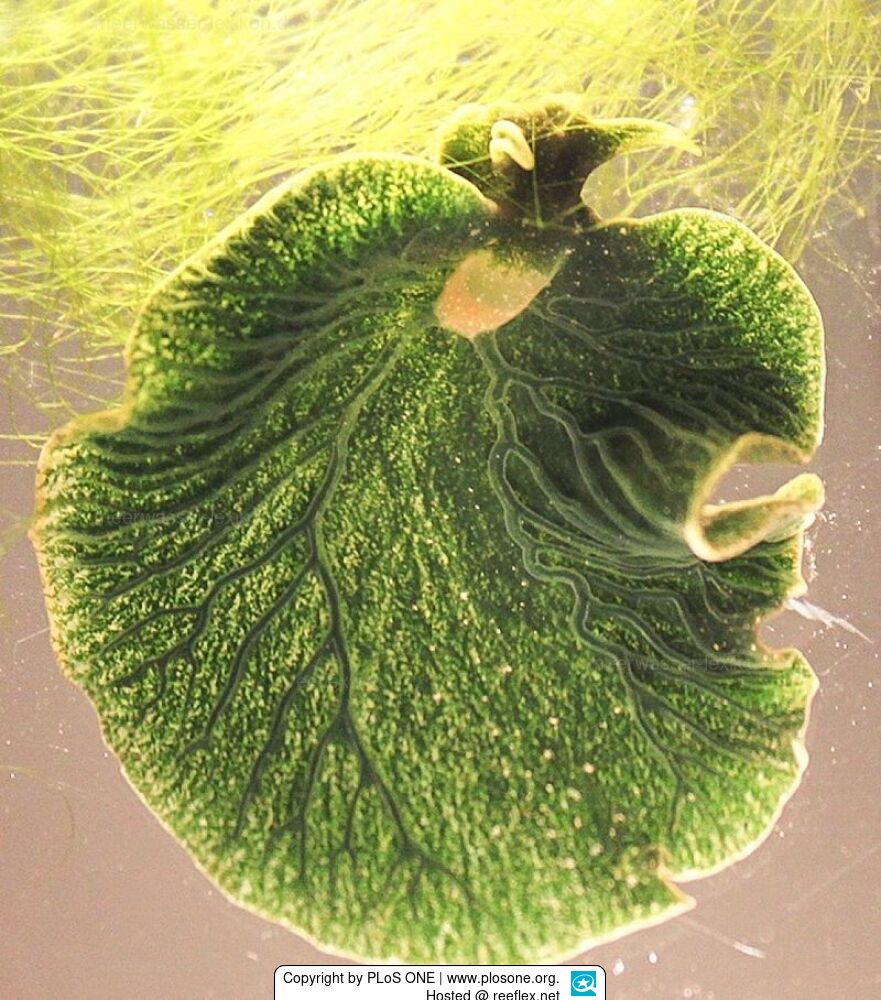Info
The marine snail Elysia chlorotica is found from the Gulf of St. Lawrence through Nova Scotia (Canada) to Florida and Texas, and lives primarily by consuming its obligate algal food Vaucheria litorea, whereby the snail ingests and stores the algal chloroplasts.
This form of algal chloroplast acquisition is called kleptoplasty and was first described nearly 50 years ago.
Scientific studies have shown that the snail can survive without its algal diet for another 12 months because it can feed on the photosynthetic products of the stored chloroplasts.
In addition to this ingenious "solar power energy", the little snail has retained another goodwill from Mother Nature's evolutionary and selective powers; it confusingly resembles a leaf with many clearly visible leaf veins, making the sap sucker virtually invisible to predators in its algae environment.
Without the plastids that contribute the chlorophyll that makes the snails bright green, the animals are light gray in color.
Literature reference:
Plos One
Lipid Accumulation during the Establishment of Kleptoplasty in Elysia chlorotica
Karen N. Pelletreau, Andreas P. M. Weber, Katrin L. Weber, Mary E. Rumpho
Published: May 14, 2014
https://doi.org/10.1371/journal.pone.0097477
This form of algal chloroplast acquisition is called kleptoplasty and was first described nearly 50 years ago.
Scientific studies have shown that the snail can survive without its algal diet for another 12 months because it can feed on the photosynthetic products of the stored chloroplasts.
In addition to this ingenious "solar power energy", the little snail has retained another goodwill from Mother Nature's evolutionary and selective powers; it confusingly resembles a leaf with many clearly visible leaf veins, making the sap sucker virtually invisible to predators in its algae environment.
Without the plastids that contribute the chlorophyll that makes the snails bright green, the animals are light gray in color.
Literature reference:
Plos One
Lipid Accumulation during the Establishment of Kleptoplasty in Elysia chlorotica
Karen N. Pelletreau, Andreas P. M. Weber, Katrin L. Weber, Mary E. Rumpho
Published: May 14, 2014
https://doi.org/10.1371/journal.pone.0097477







 PLoS ONE | www.plosone.org
PLoS ONE | www.plosone.org











































